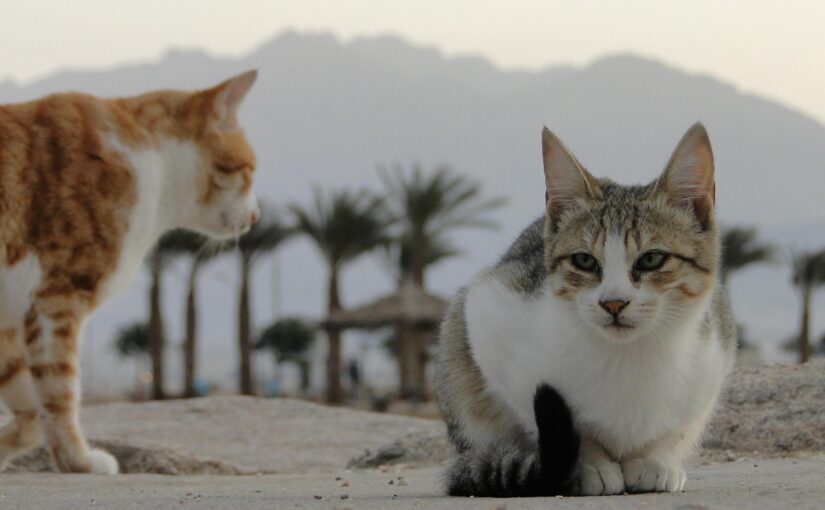While ancient Egyptians famously worshipped cats as sacred creatures and mourned them as family members, their neighbors to the northeast held a far more complicated relationship with these enigmatic felines. In ancient Israel, cats never achieved divine status or inspired grand monuments. Instead, they occupied a curious space between suspicion and grudging appreciation, reflecting the complex cultural and religious identity of the Israelite people.
Biblical Mentions and Religious Associations
The Hebrew Bible, surprisingly sparse in its feline references, mentions domestic cats only once. This solitary appearance occurs in the Book of Baruch, an apocryphal text where cats are depicted wandering through pagan temples. The image is telling: cats among idols, prowling the spaces of false worship. For ancient Israelites, this association likely reinforced negative perceptions of the animals. After all, Egypt, the land of feline veneration, was also the place of their ancestors’ enslavement. The cat, so intimately connected with Egyptian religion and culture, may have carried uncomfortable reminders of oppression and idolatry.
This theological distance from cats stands in stark contrast to how Scripture treats their larger cousins. Lions and leopards roamed the hills and valleys of biblical Israel, and these magnificent predators earned considerable respect despite their danger. The prophet Jeremiah posed his famous rhetorical question, “Can a leopard change its spots?” using the animal as a symbol of unchangeable nature. Lions appear throughout biblical narratives, from Samson’s bare-handed victory over one to the young David defending his flock against their attacks. These wild cats represented strength, courage, and divine power, qualities that domestic cats, with their Egyptian baggage, simply couldn’t match in Israelite eyes.
Mythological Origins and Sacred Stories
Yet cats did find their way into Jewish folklore through a charming creation myth. According to rabbinic tradition, Noah faced an unexpected crisis aboard the ark: a rodent infestation threatening the precious food stores. Desperate for a solution, the patriarch turned to the lion for help. The great beast responded with a mighty sneeze, and from his nostrils emerged the first domestic cats, perfectly designed hunters to solve Noah’s pest problem. This whimsical tale serves multiple purposes. It provides an origin story for cats while cleverly linking them to the noble lion, perhaps attempting to redeem their reputation by association.
Cats in Daily Life and Talmudic Wisdom
Despite biblical ambivalence, practical necessity brought cats into Jewish households, particularly during the Babylonian exile. The Talmud, that vast repository of rabbinic discussion and wisdom, mentions cats frequently and with surprising warmth. Jewish scholars praised felines for two essential qualities: their fastidious cleanliness and their exceptional pest control abilities. In Babylon, where Jews lived in exile, cats became valued household members, deployed against mice and snakes that threatened grain stores and human safety alike.
The Talmud reveals a culture of cat-sharing among neighbors. Families without their own felines would borrow cats from others, treating pest control as a community responsibility. This practical arrangement shows how necessity overcame religious reservations. When your grain bins faced invasion by rodents or your children risked encounters with venomous snakes, theological concerns about Egyptian associations faded quickly.
Archaeological Evidence and Material Culture
Physical evidence supports these literary accounts. Archaeologists discovered a delicate ivory figurine of a cat at Lachish, an ancient Israelite city. While we cannot determine whether this artifact belonged to an Israelite household or their neighbors, its presence confirms that cats lived among the peoples of ancient Israel, whether as pets, working animals, or perhaps both.
A Complex Legacy
The story of cats in ancient Israel reveals much about how religious identity shapes cultural attitudes. Unlike their Egyptian neighbors, Israelites never elevated cats to sacred status, yet they recognized their practical value. The tension between religious suspicion and practical appreciation created a unique relationship. Cats were neither gods nor outcasts but useful creatures occupying a complicated middle ground.
This ambivalence ultimately softened over time. The Talmudic era shows growing appreciation for cats’ contributions to household hygiene and pest management. Perhaps distance from Egypt, both geographical and temporal, allowed cats to shed some of their idolatrous associations and be valued on their own merits. The ancient Israelites’ relationship with cats thus reflects a broader pattern: the gradual negotiation between inherited prejudices and lived experience, between religious principle and practical necessity. In the end, the humble cat earned its place in Jewish life not through worship but through work, one captured mouse at a time.
Image: VesaL.
If you find joy in these tales of twitching whiskers and gleaming eyes, consider helping keep Whiskerito.com alive and purring. Your donation supports thoughtful research, engaging content, and the warm, wonder-filled community that makes this space what it is.
